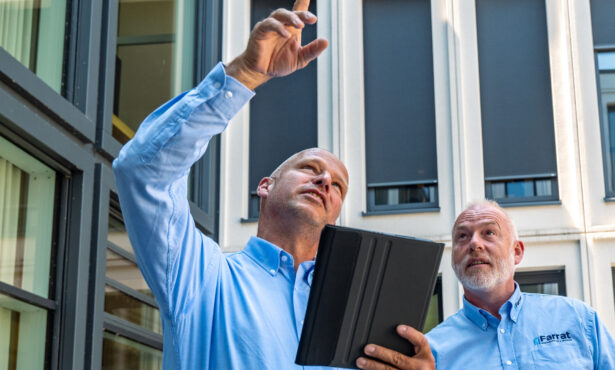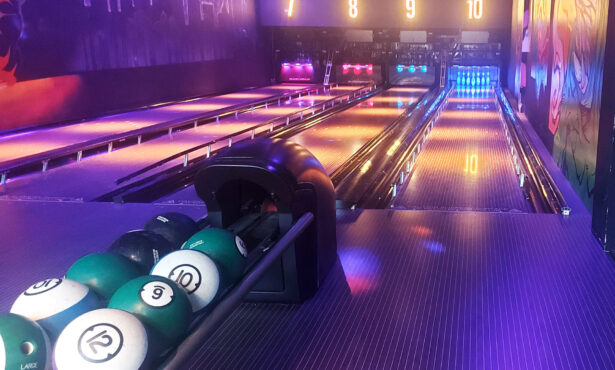CONSTRUCTION INSIGHTS
INDEPENDENT REVIEW OF DEC 2018 AMENDMENT TO BUILDINGS REGULATIONS ‘SI 2018/1230’: USE OF NON COMBUSTIBLE MATERIALS
February 14, 2019
Author: Chris Lister, Commercial Manager
Synopsis of amendment
Following the recent amendment to the Building Regulations for Fire (England & Wales) SI 2018/1230 Farrat have been looking at the implications for Structural Thermal Break materials in the new legislation.
The statutory Instrument, issued in Dec 2018 sets out the effective prohibition of combustible materials in the external walls of high rise residential buildings over 18 meters. The amendment implements these changes via explicit regulation rather than guidance, making it an effective ban on any materials not reaching the prescribed certified standard.
The standard for prescribing performance in this case is BS EN 13501-1:2007+A1:2009 entitled “Fire classification of construction products and building elements. Classification using test data from reaction to fire tests” The prescribed level of performance required under this standard for use over 18 meters is European Classification A2-s1, d0 or A1.
BS EN 13501-1 defines the classes A1 and A2 as follows:
- Class A1 will not contribute in any stage of the fire, including the fully developed fire.
- Class A2 Will not significantly contribute to the fire load and the fire growth in a fully developed fire
The characteristics “s” and “d” are defined as follows:
- s1 Weak or no smoke
- s2 Medium Smoke
- s3 High Smoke
- d0 No dripping at all
- d1 Slow dripping recorded
- d2 High dripping recorded
The amendment only recognises classifications from European Norm standard. The older British Standard classification, which was recognised in previous guidance, is not included in the new regulation.
The New regulation applies to the building external envelope or specified attachments such as, balconies, bris solei or solar panels on ‘relevant’ dwellings, residential or institutional buildings above 18 meters or 6 storeys. Where the building is a hotel or hostel, boarding house or any other building type above 18 meters the regulations revert to the current Approved Document B requirements for fire of limited combustibility A2,-s3, d2 or better.
Within the new regulation for ‘relevant’ buildings above 18 meters, some building elements of the external envelope are exempt from the A1 & A2 fire performance rating.
This exemption includes door and window frames, glazing, fixings, gaskets and significantly for Farrat, thermal break materials.Significance of the amendment to Building Regulations for Structural Thermal Breaks
Following their exemption from the recently amended standard for a fire classification, Structural Thermal Break materials, as currently supplied into the UK construction sector and deemed to be for the purpose of meeting the thermal bridging requirements of Approved Document L, can continue to be used under their existing limitations.
However, as with previous base line regulatory exemption, where building designers identify fire performance of construction materials as a higher significance factor, the testing and classification of all component’s planned for use will come under scrutiny.
To this end, alongside the continued development of new materials with Structural and Thermal properties, performance in respect of fire has become a main element in product manufacturers list of required characteristics.
As with all insulating materials there is generally a trade-off between insulation value and structural integrity. In the field of structural thermal breaks this balance is critical. Where structural performance is elevated to pole position, the goal is to achieve as good a thermal conductivity as possible without compromising structural properties.
With the introduction of fire into the equation the balance becomes three way, with Structural performance required to be maintained in the event of a fire whilst still functioning as a thermal break under everyday conditions.
The development of a new Structural Thermal Break material by Farrat has achieved this.
Farrat has utilised it’s full material R&D capabilities to develop the UK’s first Fire-Resistant Structural Thermal Break material: Farrat TBF.
If you’re interested in learning more about Farrat’s TBF Fire-Resistant Structural Thermal Break material ahead of the official launch, please contact Chris Lister, Commercial Manager, on [email protected].
E: [email protected]
T: +44 (0) 161 924 1602
LinkedIn: Chris Lister
AUTHOR PROFILE:
COMMERCIAL MANAGER,
CHRIS LISTER
Joining our UK office in October 2018, Chris is an Associate Member of RIBA and life member of Port Sunlight Rugby Club as Chairman.
Chris has over 30 years experience working within the UK Construction Product sector and leads our Thermal Breaks Team in the UK.
Areas Of Expertise: Product Design, Project Management, R&D
Time at Farrat: 6 Months






